The SRI Alumni Association recognizes key people who have made exceptional contributions to the enduring success of SRI International. All former SRI staff members are eligible for consideration. Individual awards are made once a year at the annual Alumni Reunion event. If you know of someone worthy of the award, please submit a nomination (300 words or less) to the Steering Committee describing their "exceptional contributions to the enduring success of SRI International." In your nomination, please address the following criteria:
Contribution. Significant and lasting contributions to the success of SRI. Contributions may be in any area of research, management, or service, such as establishing a new laboratory or a new field of research or performing a service recognized as outstanding.
Leadership. Clearly demonstrated qualities of leadership, vision, and creativity.
Legacy. What did the person leave behind? (e.g., enhanced reputation for SRI, new or enhanced research, business, or support activity or facility).
Hall of Fame recipients from 2009 onward are listed below. For recipients before 2009, see the Hall of Fame archive.
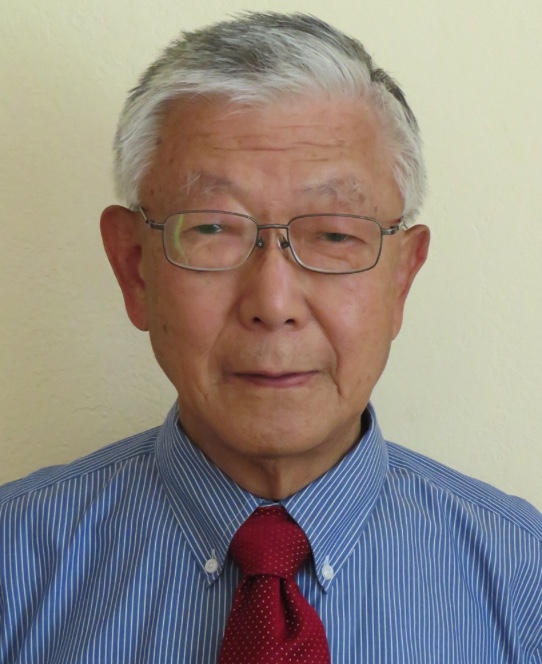
In his career at SRI, Dr. Takao Kobayashi has set a new standard in the ability to analyze a wide range of material fractures. His contribution, called FRASTA, is being used by engineers and scientists in the United States and around the world to solve fracture problems and make the world safer.
By elevating failure investigations from qualitative analyses of a single fracture surface to quantitative analyses of both failure surfaces, FRASTA enables a heretofore unobtainable playback of a failure event, which leads to an understanding not just of a failure’s root cause, but also of how to prevent a future failure. Takao and his SRI colleagues have applied FRASTA to understand failure of many materials and under a wide range of loading conditions, from explosive events where fracture occurs in milliseconds to aging structures that fail slowly over decades. They have also applied FRASTA to assist development of 3D-printed materials for use in fracture-critical situations.
Because of his innovations in fracture science and their ongoing worldwide use, Takao has been inducted into the SRI Hall of Fame.
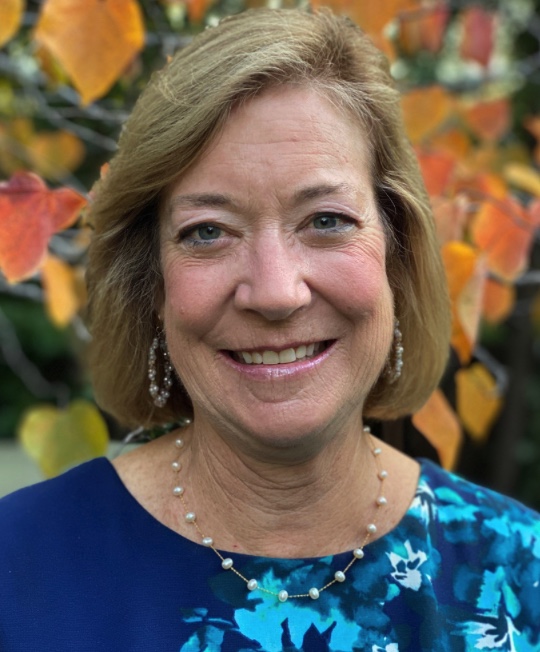
Sally is a board-certified ergonomist who has more than 36 years of experience helping SRI implement world-class ergonomics processes. The depth and breadth of her ergonomics expertise are second to none. Sally has developed proven solutions for every type of industry and every workplace setting at SRI. Her methods and tools are based on the latest research and industrial standards that are compliant with global and regional regulations, which has resulted in a consistent and accurate way of measuring and addressing musculoskeletal disorder risks across all of SRI.
Sally developed the Ergonomics and Wellness program from the ground up. With her infectious smile and devotion to helping others, Sally established a legacy of striving to keep SRI employees healthy and pain free for a lifetime.

In his long and distinguished career as leader of the Center for Geospace Studies, John Kelly, PhD, made contributions to SRI and its reputation, both nationally and internationally, in the scientific fields of upper atmospheric and ionospheric physics.
Early in his SRI career, John (JK to those who know him) had focused on researching the phenomena of the aurora borealis at the incoherent scatter radar (ISR) at Chatanika, Alaska. In the early 1980s, JK led the National Science Foundation-funded project to move the Chatanika ISR to Sondrestrom, Greenland, a logistically challenging undertaking that he completed on schedule and on budget. After the successful move, JK managed the Sondrestrom facility from Menlo Park, making frequent trips to Greenland to ensure both that the systems were working properly and that the employees were functioning as an effective team at this remote location. As a manager, he was professional, curious, and knowledgeable but never aloof, which helped build significant loyalty within the team. In fact, such was the esteem of the people JK managed that the radar station came to be known (and listed on signposts and maps) as Kellyville, somewhat to his chagrin.
After a protracted campaign, JK successfully arranged funding and secured the contract for the advanced modular ISR (AMISR) system development and implementation. This significant accomplishment required vision, determination, and political astuteness. As always, JK developed long-term relationships with clients and demonstrated a commitment to see that their goals were achieved. The AMISR systems very much pushed the state of the art in ISR technologies and capabilities, and they remain vital instruments for ionospheric and space-weather research today. AMISR radars are now operating under NSF grants to SRI in Poker Flat, Alaska, and Resolute Bay, Canada.
Because of the success of the Sondrestrom and AMISR radars, the NSF asked JK to bid for the project to operate and maintain the Arecibo Radar in Puerto Rico, the flagship of NSF’s Upper Atmospheric Facilities program and the largest radio telescope in the world at the time. When SRI was awarded that grant, JK’s group was responsible for four of the eight ISRs in the world.
JK provided a work environment where staff at all levels could prosper professionally. He often joked that he was “leading from behind,” but it was understood he was actually providing options and encouragement. In 2004 JK and the Center for Geospace Studies received SRI’s Presidential Achievement Award—the first time the award was given to a group and not to just one individual.
Over the decades, John Kelly clearly contributed greatly through his leadership of the SRI projects and staffs at these significant radar sites.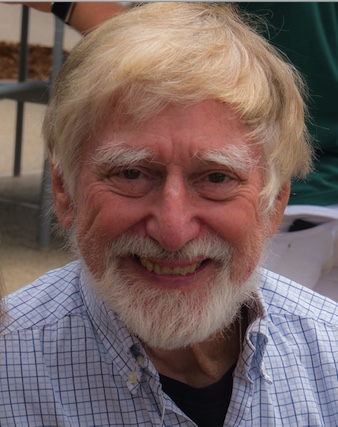
David R. Crosley joined SRI in 1979 to begin a program in laser detection techniques applied to combustion studies. He is a pioneer in this field, having begun his career using laser methods to study the structure and collisional behavior of small molecules. His research program at SRI, begun with laser-based combustion diagnostics, soon added the detection of species important in atmospheric chemistry; and it eventually expanded to include laser spark spectroscopy, laser-ionization mass spectrometry, combustion and atmospheric chemical processes themselves, and, to a lesser degree, some other areas involving laser spectroscopy. Over 95% of this work was supported directly or indirectly by a large variety of US governmental agencies.
David’s research group, at its apex including more than 15 scientists, comprised permanent staff members, postdoctoral research associates, graduate and undergraduate students, and visiting senior scientists supported by their home institutions, often from overseas. Many of David’s alumna and alumni have gone on to successful research careers in academic institutions and research laboratories. He received the first of the Mimi Stearns awards for mentoring and has been elected an SRI Fellow.
David has published more than 200 papers on these research topics, which have over 10,000 citations. He is a Fellow of the American Physical Society and the American Association for the Advancement of Science. He, with a professor from Berkeley, founded in 1981 the Gordon Conference on Laser Diagnostics in Combustion, which has continued to this day. David has also been invited to present talks at the Atmospheric Chemistry Gordon Conference and conferences of the American Chemical Society and American Physical Society, among others. He has organized workshops, often held at SRI, for his clients; these involved top researchers in the topic of each, and some of these workshop reports, particularly for NASA, have been widely quoted.
David began his SRI career as a program manager in the Molecular Physics Laboratory and after some 15 years was promoted to laboratory director. David finally fully retired in 2014.
View recording of the online event
Throughout his 41-plus years at SRI, Dr. Murray Baron exhibited exemplary technical and organizational leadership. On the technical side are his contributions to ionospheric research and his role in the unique acquisition of data on the effects of nuclear explosions on radar systems. On the organizational side are his leadership of Europe’s first high-latitude tristatic ionospheric incoherent-scatter facility and leadership of SRI’s Radio Physics Laboratory, Geoscience and Engineering Division, Advanced Development Division, and Radio Science and Engineering Division.
After joining SRI in 1959, Murray introduced digital computers to process the data from a study of dynamic ionosphere effects on radars to detect transpolar missile attacks, in a polar environment plagued by the natural aurora background. Thereafter, on Johnston Island Murray led the capture and processing of the first radar data from high-altitude nuclear explosions over the remote central Pacific. Murray returned to the auroral zone to continue assessing radar performance and led SRI’s first use of incoherent electron scatter, a new technique for probing the ionosphere. Ultimately, the SRI scatter radars were located in Alaska and in Greenland, where they operated for 11 and 35 years, respectively. These successes led to an award to SRI for construction of phased-array radars that are still operating in Canada and Alaska and also to the operation of the Arecibo Observatory radio telescope in Puerto Rico. Murray brought to SRI the leadership and staff to ensure Arecibo ongoing success that resulted in approximately $200 million in revenue.
From 1982 to 1985, Murray served as the second director of Europe’s first high-latitude endeavor, EISCAT (European Incoherent Scatter Scientific Association), overseeing the development of its nascent radar systems into robust, reliable technologies and adopting new algorithms for data acquisition and processing that enabled better physical insights.
On his return to SRI, Murray excelled in leadership positions until his retirement in 2001. Since then, he has been a consistent leader in the SRI Alumni Association.
During the 24-year existence of the SRI Alumni Association, one person has been dedicated to its success more than any other: Joyce Berry. The duration and span of her contributions are huge, both in the formal work she performed and in the myriad informal roles she took on as needed. Joyce invariably did them all well.
Joyce not only maintained all the membership records, but also wrote a Membership Data Manual, which proved helpful when she was training her replacement. Joyce designed and assembled the Association’s newsletter from 2001 through 2009. Her leadership at the annual reunions, Spring Fling events, and Hall of Fame awards was impressive: Among other things, she provided ways for tracking and reliably creating name tags for the many reunion and Spring Fling attendees, produced the Hall of Fame certificates and posters that documented the inductees’ contributions, and maintained a record of each year’s inductions. In all she did, Joyce set a standard of excellence for those who follow her.
While this nomination accentuates Joyce’s contributions to the Association, she also had a notable career at SRI. Joyce began her career in 1965 as a report typist and later became a report coordinator for Poulter Laboratory. In 1977 she became the supervisor of the centralized Technical Illustration group. After the group was decentralized in 1978, Joyce became the supervisor of the Physical Sciences Division Report and Proposal Service and was also asked to resume her role as Poulter Laboratory report coordinator, positions she held until her retirement in 1997. Joyce’s superior organizational skills and multiple other talents were invaluable in expeditiously producing accurate reports and proposals. Her work ethic was highly valued by the report authors and resulted in reports that received regular accolades from SRI clients.
In 1966, when SRI had about 2,000 employees, the institute was in a precarious financial position because it lacked consistent project accounting procedures. Increasing project overruns were red flags to the federal government, SRI’s largest client, and were leading to significant losses. A project control system was needed to identify revenue sources, track related expenditures, and monitor the cash flow of individual projects. Paul Finnigan was hired to lead a program to develop such a system.
As a first step, Paul’s team quickly conducted a financial audit and was shocked to find that the outstanding invoices represented an estimated total of roughly half SRI's annual revenues!
The team spent several months analyzing SRI’s operations and drafting specifications for the Project Status Report, the now familiar and ubiquitous PSR at the core of all SRI projects. Paul was charged with executing the measures that were essential to establish financial control. Some measures seemed draconian to the staff but were necessary. For example, all staff member credit cards were rescinded to reel in uncontrolled and untracked spending; future purchases required the controller’s personal signature. A travel company also was engaged to ensure that all travel costs were reimbursable according to contract specifications.
Development and implementation of the PSR brought full accountability to SRI projects and led to financial stability. Paul’s appointment as controller resulted in a financial model that accurately forecasted weekly cash flow, and a year later SRI was profitable and had achieved positive cash flow.
The entire management team admired the efforts to set SRI on a sound financial footing. Paul was appointed to serve on committees that set the direction of the institute, and he was also invited to join the Management Systems Division where the team promoted SRI’s Management Information System concepts to SRI clients worldwide.
During the 1970s and 1980s, SRI was at the forefront of energy technology research and was a major contributor to the national and international dialogue about energy management. Much credit is due to Pat Henry, who provided outstanding leadership in addressing critical U.S. and global energy supply and use issues. Pat worked tirelessly to build the SRI Energy and Resources Center (the Energy Center) into a leading multidisciplinary technology-based energy strategy consulting practice that had far-reaching impacts on decision makers in the private sector and those involved in setting government energy policy and allocating energy research funds. In fact, in the 1970s the new Department of Energy asked SRI’s Energy Center team to help in developing the first national energy model.
To address national energy issues, original research data were needed, and Pat’s team had to explore previously unmined technological research resources. The Energy Center’s projections and innovative analyses led multiple international energy companies to support its research, and the team’s annual presentations attracted hundreds of corporate participants from all organizational levels. For these presentations, Pat engaged multidisciplinary experts from across SRI to present results on topics such as global resource recovery methods (mining, hydrocarbons, solar, and all other options) and costs, energy technology systems and their technical and economic uncertainties, global economic uncertainties and sensitivities, water resources, and environmental constraints. The scope and quality of the analyses were impressive, especially considering the limited public domain information available and the time available to complete each analysis.
Some of the Energy Center’s findings were at times controversial and had important implications for public policy and companies’ strategic directions. Pat did not shy away from presenting results of “good objective analysis work,” even when they may have contradicted conventional wisdom.
Pat was a visible figure on the national scene, helping better define energy challenges and issues. His assemblage of collaborative teams of technical experts and savvy business professionals from across SRI to address important societal and business challenges not only led to a successful working model at SRI, but also launched many distinguished careers.
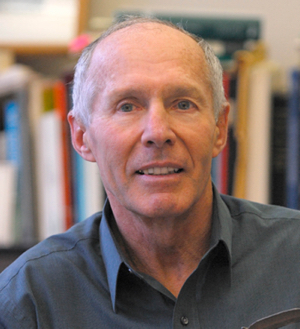
Donald Shockey is an internationally renowned expert in the fracture behavior of materials and an authority on material failures under impact and explosive loads. For more than four decades, he and his colleagues developed and presented to the world an SRI capability that few could match. It is the field of fracture physics—why and how all kinds of materials fail under both normal and catastrophic conditions, under great load, or on high-velocity, even explosive impact. Notably, his and his team’s research pioneered an approach that links microscopic failure processes with the macro behavior of structures, leading to better prediction and control of material failures. His contributions have helped solve many difficult problems for NASA, the Department of Defense, and countless other clients.
Since 1971, Don has been a true SRI Ambassador through his technical contributions, development of strong customer relationships, and dedicated service to the Fellows and Alumni organizations. In recognition of his career achievements, he was selected as an SRI Fellow in 1990 and a Fellow of ASM International in 1993; and he received the DYMAT Association’s Year 2000 John Rinehart award for pioneering work in the field of dynamic fracture, and the 2006 Society for Experimental Mechanics’ W. M. Murray Medal for excellence in experimental mechanics.
Don founded the Poulter Lab’s Center for Fracture Physics in 1998 and led the Center until his retirement in 2018. His technical talent and insights, his ability to mentor young engineers and look out for the well-being of his colleagues, his leadership in Poulter Lab, and the high honors his professional field has bestowed on him have shown him to be an exemplary member of SRI’s best.
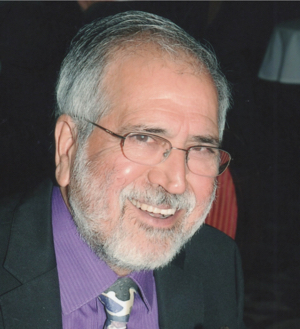
One of the greatest quandaries of our age is energy and how it can be made sufficiently available at acceptable financial and environmental costs. Ripudaman Malhotra has produced numerous insights into this huge issue from his technical contributions, including energy transfer and conversion mechanisms such as the liquefaction and gasification of coal and the mitigation of fuel residues.
As Associate Director of the Energy and Environment Center at SRI for 35 years, Dr. Malhotra managed and contributed to projects encompassing process development, mechanistic studies, and chemical analysis of resources and fuels. The work on coal liquefaction and pyrolysis identified novel pathways for hydrogen transfer and changed conventional views of coal conversion processes. The Energy and Fuels Division of the American Chemical Society acknowledged this accomplishment by presenting Dr. Malhotra with the 2015 Henry H. Storch Award. He also received the SRI 2005 Fellows Award, the highest honor SRI bestows on its employees for technical excellence and professional contributions.
Grasping the bigger picture, he is educating the world about its energy consumption and sourcing using easily grasped metrics. For example, he coauthored the book A Cubic Mile of Oil: Realities and Options for Averting the Looming Energy Crisis (with Hewitt Crane and Edwin Kinderman), proposing to use a cubic mile of oil as a standard measure of energy from all sources, thus simplifying analysis and tracking of worldwide energy use. He continues to publicize energy and environmental issues with his blog (also titled A Cubic Mile of Oil) and with frequent presentations to audiences around the nation and the world. He has delivered invited/plenary presentations at technical symposia and at universities and gives numerous talks at smaller public forums.
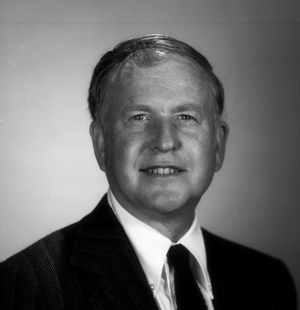
The Chemical Economics Handbook (CEH) was launched at SRI in 1950 as a compilation of diverse statistics on the chemical industry gathered from various sources and presented in a standardized format. John R. Strickland and Mimi G. Erskine were instrumental in converting the CEH from strictly a data compilation activity to a detailed marketing research compendium dubbed by users as “the Bible” of the chemical industry.
Although popular with those who wished to follow the industry, the original program never fully covered its operating costs. After a number of years, SRI management decided to no longer subsidize the CEH and recommended the program’s closure. John Strickland countered by requesting time to promote an idea he had for developing complete supply/demand marketing research reports instead of simple statistical compilations. He was given three months to determine whether a more complete product offering could convert the CEH to a financially viable program.
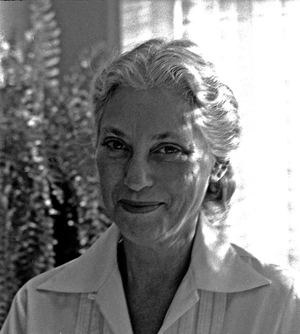
Mimi Erskine provided the key element in promoting a “new CEH”—four prototype reports. These reports were instantly well received, not only by existing client companies but also by new client prospects. Overall acceptance of the new CEH was far greater than anticipated, and the program prospered. Erskine’s research approach and thoroughness gained her high respect in the basic petrochemical field, and her work became a template for other CEH researchers to emulate.
The high level of industry respect generated by the CEH assisted greatly in developing acceptance of subsequent SRI services to the chemical industry, such as the Process Economics Program, Directory of Chemical Producers, World Petrochemicals Program, and Specialty Chemicals Update Program. Finally, the new CEH consistently provided a very high financial operating margin.
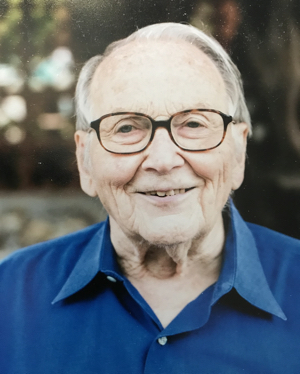
Edwin Kinderman came to SRI in 1956 with already extensive experience in nuclear energy technologies, including isotope separation, uranium processing, and reactor operations. At SRI, he directed diverse energy-related programs of the Applied Physics Laboratory, while personally conducting research on applications of ionizing radiation and reactor safety issues, as well as nuclear materials control, terrorist and rogue-nation nuclear threats, and proliferation issues. As a widely recognized expert, he was invited to speak on proliferation issues at the first International Conference on Nuclear Material Safeguards in Vienna in 1965. Under his leadership, the Applied Physics Laboratory expanded by attracting many talented scientists who achieved great distinctions in their respective fields. The groups were later merged into what became SRI’s Physical Sciences Division.
In the 1970s, Ed changed his focus to studies of energy end uses and conservation, and by 1980 he was fully occupied with technoeconomic and market analyses for government and industrial clients. In another area of concern, by the 1970s and 1980s, hijacking of planes had become a serious threat. Ed participated in a government study and recommended to the FAA to secure the door to the cockpit. Unfortunately, this advice was not heeded until after the disastrous terrorist attacks of September 11, 2001.
Although much of his work dealt with industry confidential and government classified matters, he published a number of research articles in peer-reviewed journals and contributed chapters to two books on nuclear proliferation. After he formally retired in 1994, Ed continued investigating alternative energy resources and technologies and environmental control policies, while devoting time to the analysis of the broader energy issues addressed in A Cubic Mile of Oil, the book he coauthored in 2010 with SRI’s Hew Crane and Ripudaman Malhotra.
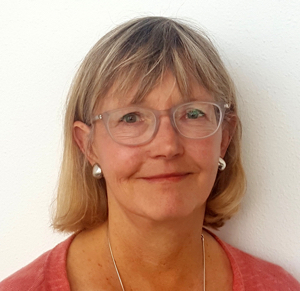
Barbara Means has been both a critical contributor to the growth and outstanding reputation of the organizations she has led at SRI since 1988 and an internationally recognized scholar in research and policy formation related to the role of technology in enhancing learning, particularly in science, technology, engineering, and math (STEM) education.
Barbara has been instrumental in attracting “the best and the brightest” researchers in numerous education-related fields, bringing far-reaching and long-lasting benefits to those fields and the children and adults affected by their work. Barbara started the Center for Technology in Learning (CTL) in 1993 with a staff of five. The next year, she assumed leadership of the division in which CTL was housed. With Barbara as Vice President, the Policy Division grew rapidly, reaching a staff of 120 with annual revenues of $16 million in 1998. In 1999, she chose to return to research full-time, becoming co-leader of CTL. In that role, she helped the center expand steadily to become a highly respected and impactful center of 80 staff with 2016 revenues of $20 million.
The exceptional breadth of Barbara’s research and policy contributions is illustrated by the wide range of government and private-sector clients that have supported her work. Barbara has directed or co-directed projects for private foundations, including the Bill & Melinda Gates Foundation; federal departments and agencies, such as the Institute of Education Sciences, the Department of Education, and the National Science Foundation; and even projects for the U.S. Air Force and the Federal Aviation Administration.
Barbara has authored or coauthored seven books and 30 book chapters, almost all of which included other SRI staff members, thereby helping them build careers that also have redounded to the benefit of SRI and their field. She also has made keynote or invited presentations to such entities as the Board of Science Education of the National Research Council; the U.S. House Committee on Science, Space, and Technology; the World Conference on E-Learning; the Second International World Summit for Education; the Council of Chief State School Officers; and the National Governors’ Association. The depth, breadth, and quality of Barbara’s research, as well as her key role in building a staff and organization with an enviable reputation, have benefited SRI in uncounted ways.
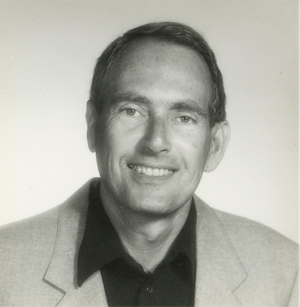
Donald Curran, the long-time director of SRI’s Shock Physics and Geophysics Program in the Poulter Laboratory, was a brilliant scientist, a beloved colleague, and a well-known and highly regarded ambassador/marketer for SRI. He joined SRI in 1970 and began leading a dynamic fracture program, which he then grew. During the following three decades at SRI, Don led several hundred research projects for government and industry, many of which involved developing materials (metals, ceramics, polymers, composites, and fabrics) and structures that would resist projectile impact (armor systems) and explosions (gas pipelines, nuclear power plants, military bunkers), “making people safer, healthier, and more productive”—SRI’s current mission statement. He authored well over 100 refereed journal articles and professional publications and coauthored three books.
Under Don’s guidance, SRI achieved international recognition in dynamic fracture of materials and structures and became the go-to research institute for projects involving material response under impact and explosive loads, a distinction that endures today at Poulter Laboratory and SRI’s remote explosive test site.
Don's abilities and accomplishments were recognized by the scientific community with several prestigious awards: In 1994, Don was named a Fellow of the American Physical Society. In 2000, he received the John S. Rinehart Award, which recognized him for “seminal contributions to the understanding and modeling of dynamic fracture, fragmentation, and shear localization.” And in 2009, he received the American Physical Society’s highest honor, the George E. Duvall Shock Compression Science Award—“For his pioneering contributions to the fundamental understanding of dynamic failure of materials and the incorporation of this understanding into successful theories and models of material response.”
In addition to his achievements, Don’s unequaled wit, interpersonal skills, and a penchant for activities “just beyond my abilities” made an indelible imprint on those who knew him.
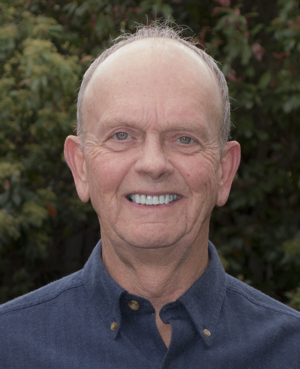
After beginning his SRI career in 1968, James Colton participated, led, supervised, and otherwise consulted as a research scientist in many international projects that resulted in significant enhancement of SRI’s worldwide reputation for achieving goals not deemed feasible by lesser performers. Examples include project work for Japanese clients on subjects ranging from the safety of nuclear facilities to surveying available computer codes and material models for simulation of impact and explosion events. Another example is his remarkable hands-on contributions to successful completion of one-of-a-kind pipeline safety experiments performed in Canada in 1992. In all cases, Jim’s contribution went much beyond his capacity as Poulter Laboratory director in that he participated and directly contributed to the advancement of the scientific goals of the project.
Most of Jim’s project work was in support of DoD and DoE, and his contributions to national security are well recognized by his peers and high authorities. These include major contributions in advancing the science involving impact and other impulsive pressure loads. His extensive background in academia (and more than 50 articles published in refereed journals) reflect Jim’s scientific career and his contributions to advancing the science in his area of specialty (response of structures to impulsive blast and impact loads).
As a result of his technical contributions, Jim gained vast recognition for himself and for SRI as an American institution that solves important problems with worldwide implications. His contributions were recognized with an SRI Fellowship award in 2006. The performance of Poulter Lab under his leadership is clear evidence of his skills and competence as a lab director. However, Jim went much beyond this official capacity in mentoring young scientists who joined the group and letting them grow in their field of interest at the fastest possible pace. Jim’s genuine and straightforward demeanor and his flawless integrity and work ethic were appreciated by anyone who came in contact with him.
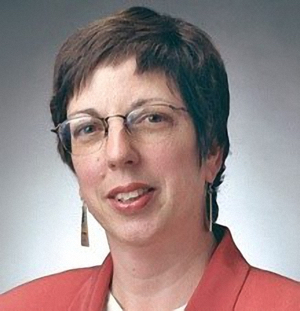
Mary Wagner joined SRI’s Center for Health, Education, and Social Science Research, directed by Dr. Mimi Stearns, in 1980. That center had been involved in studying the implementation of the so-called “mainstreaming” law (Public Law 94-142), which required giving students with disabilities a free, appropriate public education in the least restrictive (that is, the most integrated with children without disabilities) environment appropriate to their needs. To determine whether this change in policy and practice was actually having an impact on the educational and life outcomes of students with disabilities, the U.S. Department of Education funded a major longitudinal study to recruit a nationally representative sample of 13- through 16-year-olds with disabilities and follow their progress for eight years. Mimi chose Mary to co-lead this high-visibility, multimillion-dollar effort, which was the first of its kind involving students with sensory, motor, behavioral, and cognitive disabilities. This highly successful project positioned SRI to win four subsequent major contracts for longitudinal studies of children and youth with disabilities. Mary’s work was instrumental in amassing nationally representative data and objective analyses of the educational experiences and outcomes for students with different kinds of disabilities.
The SRI work that Mary led was used by policymakers in framing federal legislation and by scholars producing more than 2,000 publications and presentations using SRI’s data.
Mary herself was asked twice to testify before congressional committees.
Another major contribution Mary made was preparing her research group to expand to the evaluation of interventions intended to address a broader set of needs, not only for children and youth themselves, but also for their families. Mary established SRI’s Center for Education and Human Services (now the Center for Learning & Development), which won a major bid to do the original evaluation of California’s Healthy Start program.In her tenure at SRI, Mary exemplified the twin values of doing the best possible research and of treating colleagues with kindness and respect. She was awarded an SRI Fellowship for her scholarly contributions, as well as the Mimi Award in recognition of her outstanding job in mentoring others and promoting their professional development.
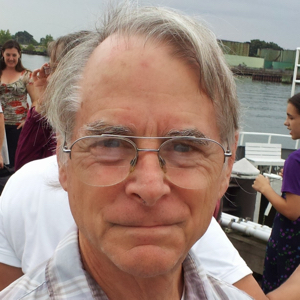
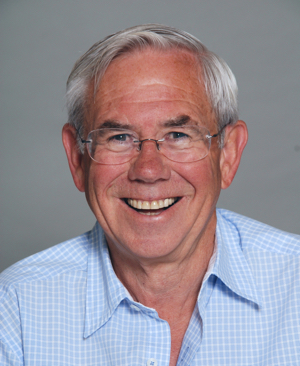
Though a long time coming, it is common today to see the fruits of artificial intelligence appearing all around us. Part of that world is a set of computer vision systems that mimic our own sensing and reasoning capabilities. One of the earliest versions of such a system was developed forty years ago, when Gerald Agin and Gerald Gleason developed the “SRI Vision Module,” which analyzed two-dimensional images to locate and inspect manufactured parts. The emphasis was on material handling and, in particular, assisting the use of robots in manufacturing. According to a 1983 NASA report, their contribution became the “basis for several sophisticated commercial vision systems.” SRI sold this module to 15 different companies and in doing so helped them introduce computer vision into the automation systems that began appearing in the 1980s and 1990s. The success of this new sensory feedback technique gave SRI a lasting reputation in the field.
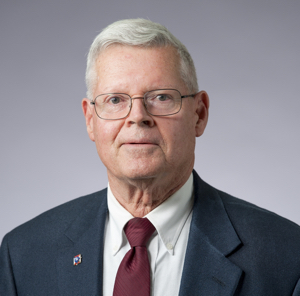
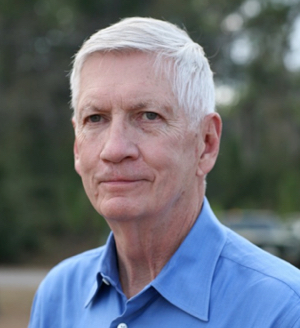
In 1995, SRI won a project from the Defense Research Projects Agency (DARPA), the technology of which would meet a significant need in American ground forces. As the Middle East conflicts began to draw in Army National Guard troops from across the nation, it was clear that these forces needed premobilization training. SRI’s technology, called Deployable Force-on-Force Instrumented Range System (DFIRST), could instrument ground force soldiers and their equipment so well that training maneuvers could realistically simulate battlefield conditions, as well as augment mission planning and assessment. The program was so successful that for more than two decades Army National Guard units and the U.S. Army became strong advocates and sponsors of this sizable and still ongoing work. Though it obviously takes teams to make efforts of this size work, in this case two people stand out: Jerry Lucha, for leading the design and implementation of the enabling technology, and Mike Boldrick, for his leadership in building the long-term sponsorships and hiring the appropriate staff for such military fieldwork. The awardees’ complementary contributions have enabled SRI to contribute markedly to the readiness of our troops as well as the overall health of the Institute. The program, one of the largest at SRI over its 20-year history, grew to such importance that in 2015 it was spun off as an SRI subsidiary.
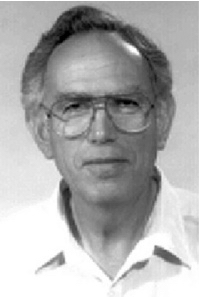
Ivor Brodie came to SRI in 1973 as a physicist with a background in vacuum tubes and, in particular, the technology of cathode ray displays embodied in various commercial products produced by a company he had cofounded. He entered SRI as the Director of the Physical Electronics Laboratory and successfully led that organization for two decades, after which he consulted for that group until his retirement in 2002.
In general, Ivor’s SRI research centered on photoconductive surfaces and the emerging field of microfabrication. Of particular note, he directed his lab into the development of a vast array of innovative subminiature objects along with the tool development and material science to make them possible. These developments included photoconductive drums and toners for copiers, field emission arrays for vacuum electronics and flat-panel displays, recorders for medical radiography, and the tools for electron-beam lithography that enabled the printing of submicron features on the substrates of silicon wafers. His contributions to that field were captured in a book he wrote with Dr. Julius Muray: The Physics of Micro/Nano-Fabrication. Ivor also brought to SRI its first electron microscope.
Ivor also helped bring world prominence to his SRI lab, evidenced in part by the creation of this brand-new technology, vacuum nanoelectronics. That innovation led to his staff’s founding of the International Vacuum Nanoelectronics Conference, which is still being held. Ivor was awarded 10 patents while he was at SRI and was named an SRI Fellow. As an indication of his ability to attract and develop talent, four of his staff also became SRI Fellows during his second 10 years as Director. He is a Fellow of the American Physical Society.
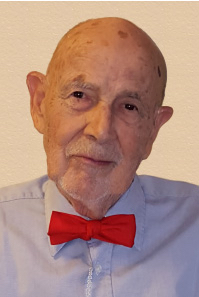
David Brown joined SRI in late 1963 as the manager of the Computer Techniques Laboratory. It was then one of just four labs in the Engineering Sciences Division and the only one concentrating on computing. Although a decade or so earlier SRI’s large project to create the first banking computer made computing research at SRI almost inevitable, in 1963 it was still not clear what form that research should take. It was incumbent on David in his role as a manager at that time to help figure that out.
In the next several years, David had a hand in bringing to SRI a set of talented researchers such that by the start of 1969 a huge breakout of new identifiable efforts emerged. At that moment, the Engineering Sciences Division expanded from five labs to a dozen identifiable program areas under just two leaders, one of whom was David Brown. David’s group of six programs included the Artificial Intelligence Group, the Augmented Human Intellect Center, and the Computer Science Group, all of which evolved into independent labs with researchers who became world leaders in their field. As these labs matured, David continued as head of the Information Science Laboratory for another 8 years, and his tenure at SRI would eventually total 30 years.
David’s contribution to this growth was well expressed by a leader of one of those emerging groups: "It was a time of great change and opportunity in technology and little tradition in independent applied research. SRI attracted some very bright and far-seeing researchers and there was a continuous search for sponsors with vision and resources. The result was a kind of start-up culture, with…a variety of growth profiles, some slow, some explosive, with consequent challenges of management—how to find the right staff, how to combine research themes, how to terminate weak programs, how to cultivate sponsors were some of Dave’s contributions. His leadership was crucial in solving these problems and he helped build a home for creativity and a model for a strong institution."
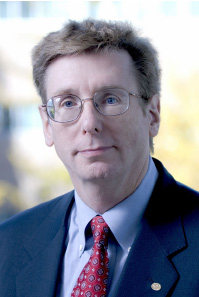
In 1998 Curt Carlson came to SRI as an executive from its subsidiary, the Sarnoff Corporation, to serve as SRI’s ninth president. Holding that position until 2014, he led SRI longer than anyone else in its nearly 70-year history. But it is not just that longevity that prompts this award. It is his accomplishments for SRI during those 16 years.
During his tenure, Curt was an engaged and interactive president who relished the opportunity to sit with all staff members to understand their role and their research, with the unspoken goal of encouraging and motivating them. He tackled the perennially difficult issue of interdisciplinary research by bringing different parts of the Institute together to better address a potential client’s needs. He explored the essence of the innovation process and left SRI better able to look for, understand, and meet a client’s needs. His career in research let him relate easily and effectively to those professionals at SRI responsible for the Institute’s livelihood.
Curt’s approach helped increase the Institute’s revenues from $160 million, burdened by debt when he arrived, to $540 million by 2014. His concentration on meeting clients’ needs and submitting more effective proposals resulted in a more uniform profitability across the major R&D divisions, a welcome Institute change.
But his most important legacy is his unprecedented attention toward and profit from SRI’s intellectual properties. Although Curt did not initiate SRI’s entry into the use of its intellectual property, he clearly brought it to a place of prominence and a point of substantial—often crucial—help to the Institute’s bottom line. Also building on prior policy, he saw to it that part of the financial return from that property found its way back to the inventors and to the staff in general. For the first time in its history, royalty and equity became, and are still, key components of SRI’s financial picture.

Ron Moore worked at SRI from 1955 until 1992 as a creative artist, from the days of pen and ink drawings and film photography well into the age of computer graphics. His contributions and forward thinking as an illustrator and graphic designer helped consolidate SRI’s position in the business and scientific communities as a professional research organization.
Ron’s first task was to create, starting with blueprints, an 8-foot-long artist’s conception of a finished explosive device. Many more such illustrations followed, including drawings of SRI’s famous Shakey the Robot. In addition, Ron created illustrations for a variety of media, ranging from SRI promotional pieces and periodicals to posters for special events and slide presentations. His designs of SRI’s publications -- the Long Range Planning Service, SRI Journal, Investment in Tomorrow -- distinguished them from those of our competitors and won several national awards for cover designs.
Ron recognized early on the importance of a uniform corporate identity, and he worked hard to implement a cohesive corporate identity program that has had long-lasting positive effects on SRI’s reputation. The program included harmonious designs for an array of SRI presentation materials, including logos, stationery, posters, and business cards, that became the SRI style. He was quick to realize the potential of early Apple computers, using his own IIe at home until SRI provided him one. He promoted the use of Apple computers in the publications arena, and helped many staff members—eventually including his boss—learn how to use Apple’s graphic software.
Through the years, Ron worked across the Institute, stimulating staff creativity and capturing ideas in memorable images and publications. His wry humor and quick wit made him a joy to work with as he helped define the visual character of the Institute through its publications.
2014: There were no inductees in 2014

From the time that Adam Cheyer came to SRI from UCLA as a young computer scientist in 1993, he became an important contributor and creator of interesting new formulations. Working in the Artificial Intelligence Center (AIC), he began to conceive ways to improve our interaction with computers and to unite the various components of artificial intelligence. The modes of human-computer interaction were increasing, and SRI had more than its share in hand: speech recognition, natural language understanding, the mouse, virtual reality, pen computing, text-to-speech, and higher-level applications such as email, scheduling systems, and distributed databases. In a brilliant initiative, Adam brought organization to all these in a structure called Open Agent Architecture (OAA). Through an approach Adam branded “Delegated Computing,” users could input a task request in a variety of ways and then independent agents organized in a community would both collaborate and vie for selection to produce the best response. This environment produced more than 50 demonstration systems, such as a smart refrigerator, a speech-enabled TV, and collaborative robotics. It also planted the seed for a world-famous breakthrough in virtual personal assistance.
After leaving SRI in 1999 to try out some of his ideas in the commercial world, he returned to the AIC in 2003 for its largest project ever, a DARPA initiative called CALO (Cognitive Assistant that Learns and Organizes) that would involve virtually every AI research center in the United States. CALO was directed toward creating systems that could “learn in the wild,” adapting to become ever more efficient at aiding users in accomplishing everyday tasks.
Four years later, Adam co-founded an SRI spin-off company called Siri, which launched the first popular “conversational assistant” iPhone app. When Steve Jobs convinced the team he believed in the long-term vision of the technology, the founders agreed to sell the company to Apple. Because SRI owned a significant interest in Siri, it was able to share in the sizable financial outcome of this transaction. Siri now lives in iPhones and iPads everywhere and is a watershed achievement in human-computer interaction and artificial intelligence.
Adam also has found the time to help start two other companies. Change.org has a community of more than 40 million active users who are driving change by raising awareness of injustices around the world. Genetic Finance, with more than 1.3 million computers, is applying machine learning on a massive scale to solve problems in finance, medical applications, and genomics.
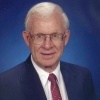
Don Lorents joined the Molecular Physics Laboratory (MPL) in 1959, only 3 years after it was founded by his graduate school colleague Charlie Cook, and he played a key role in the scientific achievements of the lab for the next 35 years and beyond. His training in interactions of low-energy electrons and ions with atoms and molecules fit well with the research activities of Charlie, Jim Peterson, and Felix Smith, and between them they soon built the lab into a group with an international reputation. Don provided stalwart leadership during this period, including spending 10 years as director of the MPL. The lab grew to a peak of 60 members during his tenure; it attracted outstanding scientists from the United States and abroad to visiting scientist and postdoctoral positions, attracted university faculty to spend their sabbaticals here, and sent seven of its senior staff members out to university professorships.
Don’s scientific research encompassed extensive and ongoing work in experimental and theoretical atomic and molecular physics, including electron-atom and ion-atom collisions. In 1972, he demonstrated a unique example of the practical benefits of basic research when he used his experience with scattering experiments on He2+ and Ar2+ to formulate the excitation mechanism for production of excited states in dense rare gases, which is the basis for the newly discovered rare-gas excimer lasers that were of great importance in the era of the Strategic Defense Initiative. This led to an extensive laser development and application program that was a major part of MPL’s activity for the next 10 years. Later, Don led a program to produce, characterize, and use carbon fullerene molecular clusters and their derivatives. This work carried on well into his partial retirement years.
Don was named an SRI Fellow in 1985 in recognition of his work in high energy laser development. He should also be recognized, along with Charlie Cook, as a founding member of SRI’s Institooters band.
2012: There were no inductees in 2012
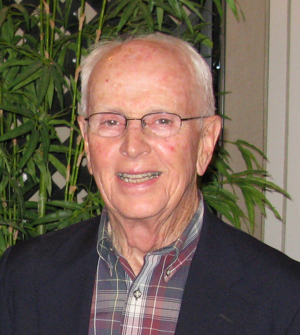
Ed Acton and his colleagues developed and demonstrated techniques for the synthesis of hundreds of new chemicals for screening as potential anticancer drugs. Activity and mechanism studies, beyond the National Cancer Institute (NCI) screen, were carried out in numerous laboratories. From 1959 until 1986, his investigations covered a wide variety of chemical classes and structures. With his colleagues, Ed wrote and published more than 80 papers and was issued 19 patents. The quality of Ed’s work and the straightforwardness of his efforts brought SRI to the attention of cancer researchers around the world and brought a steady stream of funding to SRI’s Life Sciences Division, much of it from NCI. Ed presented his findings at scientific meetings in North America and Europe, which led to useful collaborations between SRI and other research organizations. After Ed left SRI, he spent several years in Bethesda, Maryland, doing drug synthesis at NCI.
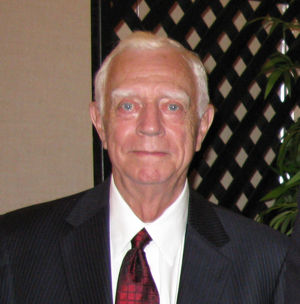
Earl Blackwell began his career at SRI in the Huntsville, Alabama, office in May 1970. Three years later, Earl transferred to Menlo Park, where he took the lead on a program to improve the effectiveness of the U.S. Navy’s ICBM test and training ranges. In every program he engaged in during his career, Earl consistently contributed innovations that resulted in significant improvements in U.S. leadership in both the development of military systems and the training of our armed forces personnel.
Earl became well known and highly respected nationally for his development of systems to provide high-accuracy real-time measurement applications using the satellite-based Global Positioning System assets. One of these, Exploitation of Differential GPS for Guidance Enhancement, culminated over 17 years of research and innovative techniques that spawned a number of related projects. With Earl’s assistance, this program area continued to grow, diversify, and prosper and still is considered an important core business base for SRI’s Engineering & Systems Group.
Earl’s approach to new technical challenges was unconstrained and creative, enabling him to consider all potentially feasible alternatives while never missing the big picture. Earl’s professional and innovative approach is considered outstanding by all who worked with him—management, staff, and clients.
As a mentor and teacher, Earl developed SRI’s younger and less experienced staff. His ability to instruct through technical discussions and freewheeling exchanges always contributed greatly to the overall development of future project leaders while ensuring the best possible technical effort on the project at hand. Everyone on Earl’s project teams received an invigorating, creative experience that helped rapidly expand their systems development and engineering skills.
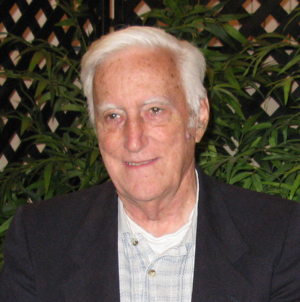
Joe DeGraw led a very extended effort at SRI on a class of cancer-fighting drugs that compromise a cancer’s ability to use normal blood constituents to grow. One of those normal growth-enabling compounds is folic acid. This natural compound is particularly important to rapid cell division and thus can be a “feeder” to cancer. As early as the 1950s, researchers synthesized a drug, methotrexate (MTX), that appeared to a cancer cell as folate but, once transported into the cell, caused its death through inhibiting its production of DNA/RNA. Thus this class of drugs was called antifolates, and SRI’s versions of these started with improvements to that line. One improved compound, edatrexate (EDX), was far more effective than previous versions in experimental tumors in animals. EDX has been used alone and in combination with other drugs for lung and breast cancer in clinical trials and non-Hodgkins lymphomas, although it has not been commercialized.
In the 1990s, Joe and his colleagues introduced another SRI analog, called PDX, that was targeted for smoking-induced lung cancer. Again, to help differentiate cancer from normal cells, it exploits a specific transport protein that is more abundantly expressed in cancer cells. Now known as pralatrexate, PDX passed through accelerated trials because of urgent need. It was approved in 2009 as the first drug available for relapsed or refractory peripheral T-cell lymphoma, a biologically diverse group of aggressive blood cancers that have a poor prognosis. It is on the market and also is under evaluation for several other cancers. Through the many decades of this SRI work on antifolates, Joe was the principal contributor.
Over his nearly 40 years at SRI, Joe also invented other antifolate drugs, including some for the treatment of rheumatoid arthritis. He also created a nonaddictive analog of morphine and even a pheromone to help control the western pine beetle that is devastating many western forests. And there were other leadership positions at SRI. From his entry as an organic chemist in 1957, he became a leader of SRI’s medicinal chemistry effort, directing that effort from 1974 to 1990 and then as Associate Director of Biorganic Chemistry until 1994. He was named an SRI Fellow in 1987 for his antifolate work and other activities, including the above-mentioned drugs. Joe was the author of more than 160 research publications and 30 patents during his career at SRI. He was on the editorial board of Current Medicinal Chemistry and served as a reviewer for National Institutes of Health (NIH) grant award committees from 1980 to 1988. He also served as a consultant to numerous pharmaceutical companies in the United States, Europe, and Japan.
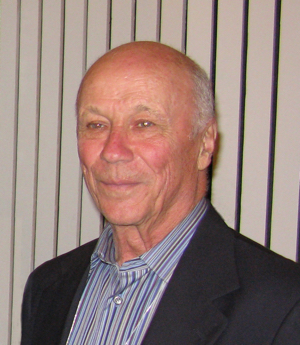
As a group leader in the Life Sciences Division, Elmer Reist developed several long-running research programs on drug synthesis, starting with one for antiviral and antimalarial agents, supported by the National Institute of Allergy and Infectious Diseases (NIAID) and Walter Reed Army Medical Center, respectively. This program in nucleoside and carbohydrate chemistry drew on his 10 years of experience at SRI synthesizing anticancer drugs for the National Cancer Institute (NCI).
Elmer subsequently established a program to synthesize potential carcinogens for the chemical repository of NCI. In collaboration with several other research organizations, he even designed labs with special air handling systems to prevent the release of these carcinogens.
Another program Elmer developed prepared new chemicals to treat AIDS and AIDS-related side diseases, such as cytomegalovirus. It developed into a 10-year effort funded by NIAID and was carried out in collaboration with researchers at Washington State University. Elmer’s programs brought renown to SRI and established SRI’s preeminence in the field of drug synthesis. With his many presentations and publications, Elmer became well known throughout the worldwide research community. At the time of his retirement, he was Associate Director of Bioorganic Chemistry and had more than 100 publications in peer-reviewed journals and several patents on antiviral agents.
2010: There were no inductees in 2010
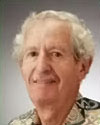
Ted Mill's contributions to environmental chemistry led to international guidelines for identifying potentially harmful new chemicals to protect the environment and have enhanced SRI’s reputation in the sciences. Ted Mill came to SRI in 1960 from the Du Pont Experimental Station. At SRI, he exhibited strong leadership of the Physical Organic Chemistry Department staff, which ranged from 15 to over 30 members for more than 20 years.
In the 1970s Ted Mill began two new areas of research related to oxidation chemistry. One area focused on how vitamin E trapped radicals in biomembranes and how these membranes affected reactivity of the radicals, thereby advancing our knowledge of the role of free radicals in heart and aging diseases. The second area of radical research, funded by the National Science Foundation, showed that oxidizing radicals form in sunlit rivers and lakes. The discovery led to better understanding of how sunlight degrades organic compounds dissolved in natural waters. In many additional studies, funded by the Environmental Protection Agency and European regulators, experimental and theoretical methods were developed to predict how fast chemicals are transformed and degraded in air or water.
Ted Mill’s research has significant social value in giving both regulators and chemical manufacturers clear guidelines for identifying potentially harmful chemicals before introduction to the environment and therefore for regulating their use. SRI’s methods were adopted by the United States as well as the European Union and remain the principal means of safeguarding against widespread introduction of new persistent chemicals such as PCBs, DDT, or MTBE. In 1998, Ted Mill assumed an emeritus staff position in the chemistry laboratory, where he continues research in oxidation and environmental chemistry.
Bios for recipients before 2009 are available on the Hall of Fame archive page.
2008: David Golden — Ken-ichi Inouye — Kinney Thiele — Peter Hart — Bob Dehn
2007: There were no inductees in 2007
2006: Bill English — Jeff Rulifson — Carl Spetzler
2005: Catherine Ailes — John P. McHenry — Charles Tyson
2004: Charles A. Spindt — Robert Stewart — Shigeyoshi Takaoka — Masato Tanabe
2003: Jack Goldberg — Marion Hill — Earle Jones — Peter Lim — William Royce
2002: Mike Frankel — Paul Jorgensen — Donn Parker
2001: George Abrahamson — Dale Coulson — Philip Green — Kitta Reeds — Carl Titus
2000: Hewitt D. Crane — William C. Estler — Elizabeth "Jake" Feinler — Douglas D. Keough — Kenneth E. Lunde — Donald L. Nielson
1999: Richard B. Foster — John V. N. Granger —Melba Harrison — Richard C. Honey — Ralph Krause — Thomas H. Morrin — Jerre Noe — Allen Peterson — Lorraine Pratt — Don R. Scheuch — Ronald Swidler -- Mike Villard
1998 and earlier: Bill Baker — Emery Bator — Fran Bohley — Charles Cook — Bonnar Cox — George Duvall — Kenneth Eldredge — Douglas Engelbart — William Evans — Dennis Finnigan — Gustave Freeman — Weldon Gibson — Jane Goelet — Bruce Graham — Chuck Hilly — Jesse Hobson — Fred Kamphoefner — Ray Leadabrand — Albert Macovski —Frank Mayo — Joseph McPherson — Arnold Mitchell — Chozo Mitoma — Tetsu Morita — Jean Nelson — Gordon Newell — Nils Nilsson — William Platt — Thomas Poulter — Ed Robison — Charles Rosen — Robert Shreve — William Skinner — Felix Smith — Robert Smith — Mimi Stearns — Lawrence Swift — Robert Vaile — John Wagner